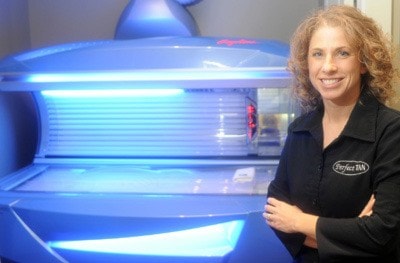Local authorities have no immediate plans to follow Greater Victoria’s indoor tanning ban.
The Capital Regional District passed a bylaw in January prohibiting salon use by teens under 18, following recommendations from medical health officers and anti-cancer groups.
The bylaw requires final approval from the B.C. Ministry of Health, but if supported, violators could face fines of $250 to $2,000.
“We’re not looking at it right now,” said Abbotsford bylaw manager Gordon Ferguson. “The city doesn’t typically regulate public health issues.”
Officials from Fraser Health Authority and Vancouver Coastal Health are watching the situation in Victoria with interest, but neither organization has intentions of making regional recommendations at this time. Fraser Health spokesperson Roy Thorpe-Dorward said that decision could change if the new chief medical officer wants to pursue the issue.
UV rays emitted by artificial tanning lamps are considered a Class 1 carcinogen, on par with arsenic and tobacco. Health Canada warns that tanning beds emit about five times as much UVA radiation as the sun. Exposure can cause skin cancer, eye damage, premature skin aging and suppression of the immune system.
Dr. Gillian Arsenault, regional medical health officer for Fraser Health, points out that any tanning is harmful because UV rays damage the DNA in cells. Tanned skin is a reaction to this radiation, she explained.
“The earlier you start, the longer the duration, and the more hits your cells take, the more chance that your body will not be able to repair in time and that you will get skin cancer,” said Arsenault. “That said, we need some sunlight and it’s more in the UVB range to stimulate vitamin D production. But vitamin D production is very efficient. If we start tanning, we’ve had too much.”
Perfect Tan owner Lisa Byers believes industry-wide regulations would be more beneficial than a complete ban on youth tanning. Enforcing a bylaw is difficult when tanning beds can be put in a variety of businesses like laundromats and gyms, she said. Byers would like to see a mandate ensuring that certified operators provide skin typing to all clients and control exposure times. For example, she says a person with skin type 1, fair skin which is most susceptible to burning, should not be permitted to use salon equipment.
“Moderation totally depends on your skin type. It’s really not the amount of days you come in but the total exposure,” said Byers, who has worked in the industry for 17 years. “Do I think that in the past people have overexposed and abused indoor tanning? Absolutely, the same way those same people have abused outdoor tanning.”
At Sun Rayz Tanning Studios, manager and former salon owner Megan Betker agrees that Greater Victoria went too far with the ban. She believes the bylaw has created a negative perception about indoor tanning and taken away parental rights.
“Parents make the same choice every day when they let their teen go outside in the summer,” said Betker. “Only a small percentage of customers are under 18 at the majority of tanning salons. They only come in to prepare for vacations and special events.”
She supports increased regulations involving parental consent for underaged clients. Sun Rayz currently requires parental consent for teens under 16.
